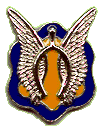
Campaign

Campaign
Operation Attleboro was actually
made up of Phase I and Phase II.
Phase I was the period of time
early on beginning about 2 Sep 66 and extended into early Nov 1966.
Phase II began about 6 Nov 66
until the end on 24 Nov 66.
Operation Attleboro turned out to
be the largest series of air mobile operations to date and involved all or elements of the
196th Light Infantry Brigade, 25th Division 1st Infantry Division, a brigade of the 4th
Division, as well as numerous Army of the Republic of Vietnam and Regional Forces/Popular
Forces and Nungs.
In the end, the operation became
a Corps operation commanded by II Field Forces.
Tay Ninh West, often called
"New Tay Ninh" to distinguish it from the old French constructed airstrip in the
Vietnamese town of Tay Ninh called "Old Tay Ninh", was a newly built and yet
uncompleted base camp of GP medium and small tents built especially for the 196th Light
Infantry Brigade. The 196th Light Infantry Brigade was the first of four Light Infantry
Brigades due to be sent to Vietnam. They were formed at Ft. Devens, MA and had arrived in
Vietnam at Vung Tau a month before in Aug 1966. The Brigade was untested in battle and
Operation Attleboro, named for a town in Massachusetts from which the 196th had come, was
the code name picked for their first combat encounter with the jungles of Vietnam.
The three straight-leg infantry
battalions were airlifted in airbmobile fashion to LZ's surrounding Tay Ninh in all
directions. No real action was encountered and the units were moved about from LZ to LZ
and back to base camp. Most of the air movements in the early Phase I was done by the
145th Combat Aviation Battalion and its assault helicopter companies, the 118th, 68th and
71st.
The terrain all over War Zone C,
and particularly around Tay Ninh and all the non-farm land, was what might be classed as
high Savannah. Tall wavy elephant grass interspersed with occasional very tall trees was
the norm. Rainfall in this area is not as much as areas farther east and near the sea
coast of Vietnam. Many areas around Nui Ba Den and adjacent to Tay Ninh (West) were
punctuated with huge 6-10 feet tall termite mounds. These mounds created havoc, when found
with tall elephant grass, for helicopters dropping off troops in a combat assault. All
aircraft crews were especially watchful for termite mounds.
Operation Attleboro, Phase II,
was punctuated by a massive build-up of more Infantry battalions and aviation assets.
Phase II erupted after the 196th Light Infantry Brigade had, for several weeks,
experienced no significant contact with the Vietcong or North Vietnamese Army(NVA).
However, intelligence had indicated that their elements were somewhere in this area of War
Zone C and this sounded the alarm. The decision was made to involve the 1/27th Inf of the
25th Infantry Division, elements of the 1st Infantry Div(at Dau Tieng), 3rd Bde of the 4th
Inf. Div(soon to be come part of the 25th Inf. Division, the 173d Abn Bde the 11th ACR
several ARVN Bn's and of course the 196th Light Infantry Brigade.
Operation Attleboro was a very
large and complex movement of maneuver battalions in what some have called,"Eagle
Flights". However, they did not follow the normal rules of engagement for "Eagle
Flights".
It must have been interesting
from the enemy's viewpoint to see all the helicopters flying around and landing and taking
off with and without troops on board. The Vietcong and NVA had done a masterful job of
hiding and evading observation. In the end over 1,000 enemy were killed while US losses
were 155 KIA and 494 wounded.
Not wanting to give away their
positions, there was little ground fire at the helicopters. There was apparently very few
anti-aircraft weapons employed by the NVA and Vietcong units and only 30 caliber weapons
were used to inflict single shot damage to the aircraft.
